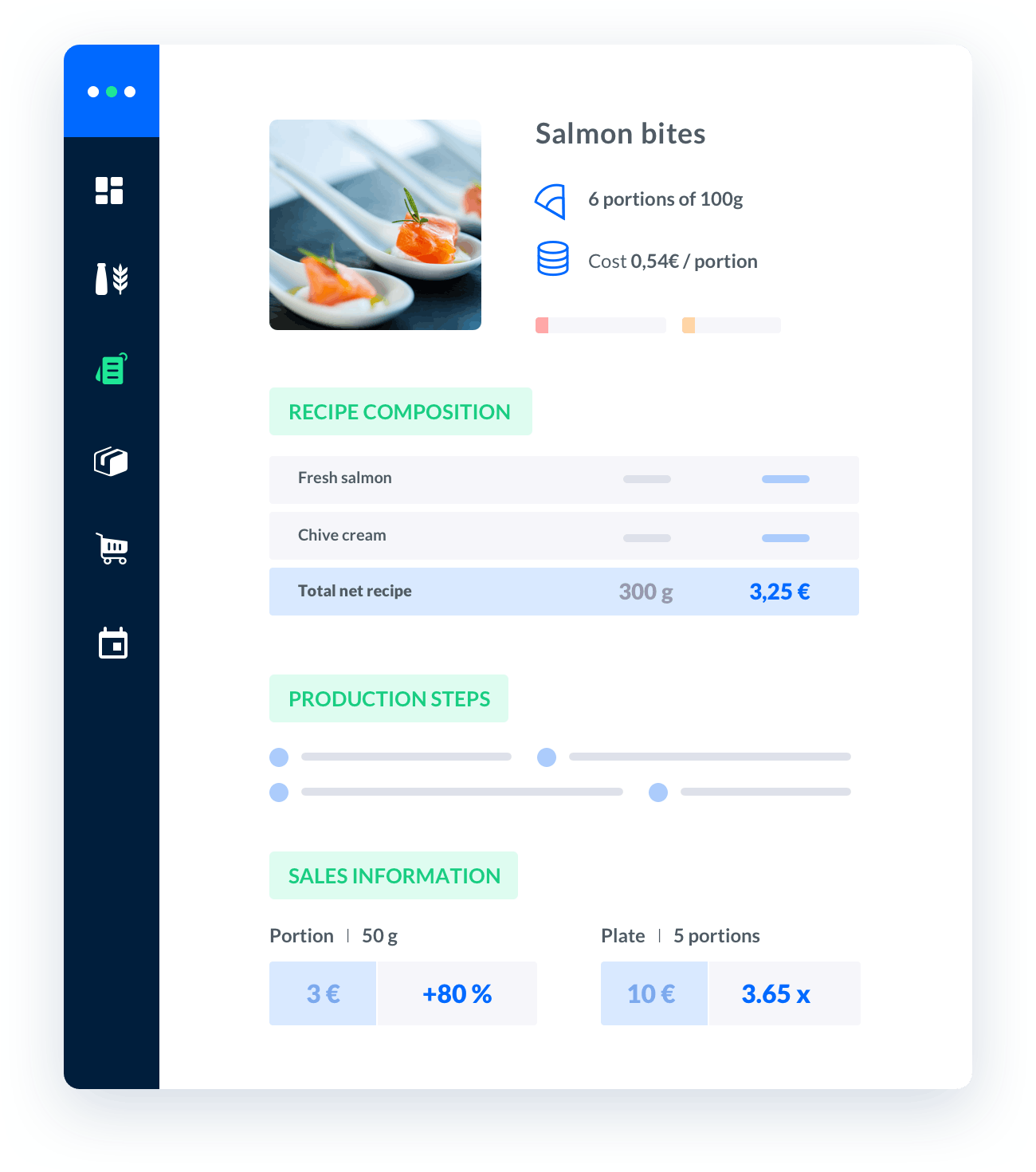cost per meal formula
When it comes to running a catering business or managing food costs for any meal-related venture, understanding the cost per meal formula is crucial.This formula allows you to calculate the cost of each individual meal, including all the ingredients, labor, and overhead expenses.

Melba: the food cost app to optimize the profitability of your restaurant
Discover how to optimize the profitability of your restaurant with melba

The ultimate guide to food cost restaurant
Learn more about the food cost basis and how to reduce your food cost percentage
When it comes to running a catering business or managing food costs for any meal-related venture, understanding the cost per meal formula is crucial. This formula allows you to calculate the cost of each individual meal, including all the ingredients, labor, and overhead expenses. By knowing the cost per meal, you can make informed decisions about pricing, profitability, and managing your overall budget.
Calculating the Cost Per Meal
Calculating the cost per meal involves considering various factors that contribute to the total expenses. Here is a step-by-step breakdown of the formula:
Step 1: Determine the Total Food Cost
Start by calculating the total cost of the ingredients used in a particular meal. This includes all the food items, such as meat, vegetables, spices, and any other components. Consider the quantity used for each ingredient and its individual cost.
Step 2: Include Labor Costs
In addition to the cost of ingredients, you need to account for the labor expenses involved in preparing the meal. This includes the wages of chefs, cooks, and any other staff directly involved in the food preparation process. Divide the total labor cost by the number of meals prepared to determine the labor cost per meal.
Step 3: Factor in Overhead Costs
Overhead costs are the indirect expenses associated with running your catering business. These include rent, utilities, insurance, equipment maintenance, and other administrative costs. Divide the total overhead costs for a specific period by the number of meals prepared during that period to determine the overhead cost per meal.
Step 4: Calculate the Total Cost Per Meal
Add together the total food cost, labor cost per meal, and overhead cost per meal to obtain the total cost per meal. This formula provides you with a comprehensive understanding of the expenses involved in producing each meal.
Benefits of Knowing the Cost Per Meal
Understanding the cost per meal offers several benefits for catering professionals:
- Accurate Pricing: By knowing the actual cost of each meal, you can set appropriate prices that ensure profitability while remaining competitive in the market.
- Profit Analysis: Calculating the cost per meal allows you to analyze the profitability of your catering business. You can compare the cost per meal against the revenue generated to assess your overall financial performance.
- Budget Management: Knowing the cost per meal helps you create and manage budgets effectively. It allows you to allocate resources efficiently and identify areas where you can reduce costs without compromising on quality.
- Menu Planning: With the cost per meal in mind, you can strategically plan your menu offerings. You can identify which dishes are more cost-effective and popular among customers, helping you make informed decisions about your menu.
Factors Affecting the Cost Per Meal
Several factors can impact the cost per meal in the catering industry:
Ingredient Quality and Seasonality
The quality and seasonality of ingredients can significantly influence their cost. Fresh and premium ingredients may be more expensive, but they can also enhance the taste and overall quality of your meals. Seasonal ingredients, on the other hand, may offer cost advantages due to their abundance.
Menu Complexity
The complexity of your menu items can affect the cost per meal. Dishes that require intricate preparation techniques, extensive ingredient lists, or specialized equipment may have higher costs associated with them.
Portion Sizes
The portion sizes you offer can impact the cost per meal. Larger portions require more ingredients and may increase overall expenses, while smaller portions can help reduce costs but may affect customer satisfaction if not appropriately balanced.
Economies of Scale
The volume of meals prepared can influence the cost per meal. Larger catering operations often benefit from economies of scale, allowing them to negotiate better prices for ingredients and reduce overall expenses.
Conclusion
Calculating the cost per meal is an essential factor in managing food costs for catering professionals. By understanding the formula and considering various factors that affect the cost, you can make informed decisions regarding pricing, profitability, and budget management. Remember to regularly reassess your cost per meal to adapt to market changes and ensure the financial success of your catering business.






